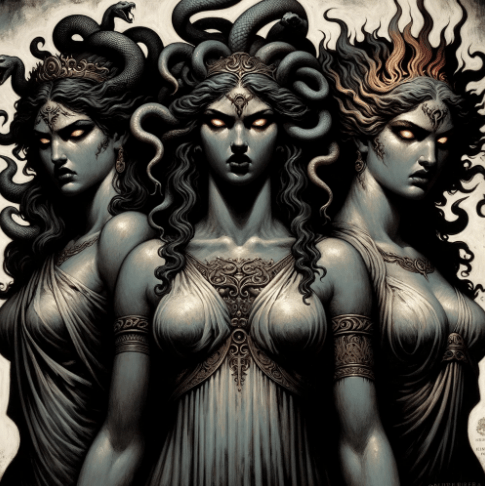In the realm of Greek mythology, the figures of the Furies, or Erinyes, loom with a formidable and enigmatic presence. Born from the darkest elements of ancient Greek lore, Tisiphone, Megaera, and Alecto are the incarnations of vengeance and retribution.
They originate from the blood of Uranus, which was spilled upon the Earth by his son Cronus; these deities are more than mere mythological entities. They embody the ancient concepts of justice and morality, acting as the executors of divine punishment for human transgressions.
Tisiphone: The Avenger of Murder
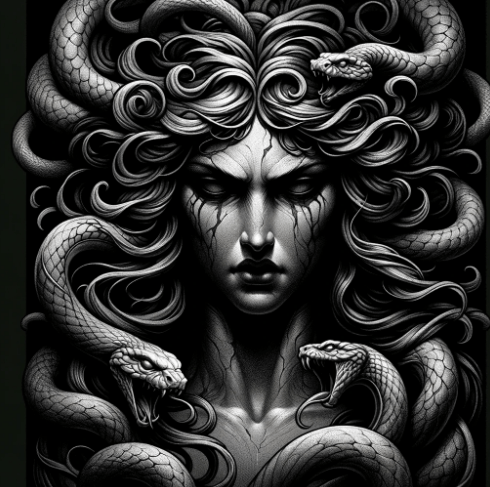
Although all three of the Furies served retribution for all injustices, each of them had a stronger representation in vengeance for specific wrongdoings. Tisiphone occupies a particularly fearsome role. She is often depicted as a dark, wrathful figure, her visage twisted in rage and her hair a nest of serpents, reflecting her connection to the underworld and death.
She personifies the relentless pursuit of justice for victims of murder, an avenger who tracks down those who have spilled blood. Her presence in myths is a powerful reminder of the inevitable reckoning that awaits those who commit the ultimate transgression against another’s life.
Her role extends beyond mere punishment; Tisiphone is a manifestation of the collective societal desire for retribution and the restoration of order that follows violent acts.
Megaera: The Guardian of Marital Fidelity
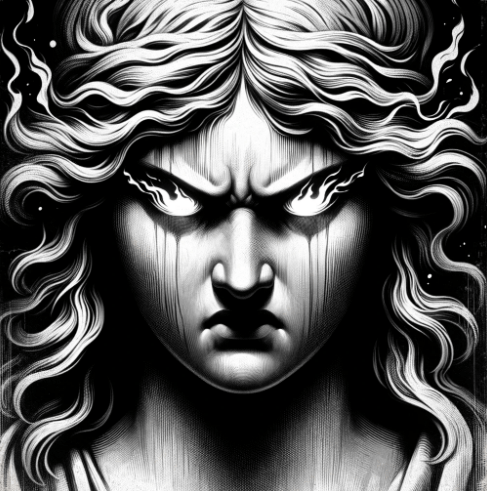
Megaera, the ‘Jealous One,’ serves a unique function among the Furies. She is the enforcer of fidelity and the punisher of oath-breakers, particularly in the context of marital vows.
Her portrayal in myths is often as a figure of resentment and anger, a direct response to the betrayal and violation of trust. In a society where marriage was both a sacred institution and a social contract, Megaera’s role was crucial in upholding moral and societal standards.
Her pursuit of justice against those who break their sacred vows underscores the value placed on loyalty and the seriousness of marital commitments in ancient Greece.
Alecto: The Eternal Enforcer of Moral Order
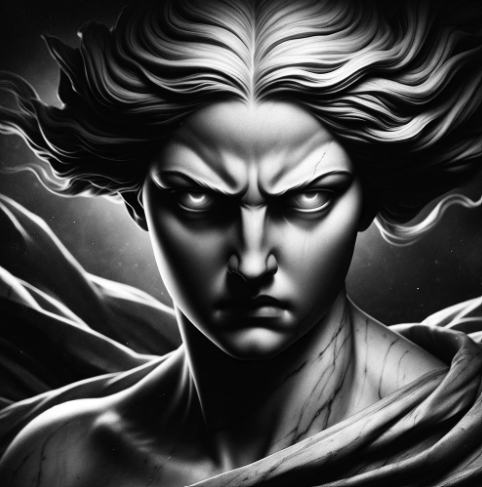
Alecto, whose name means ‘Unceasing,’ is the embodiment of the never-ending pursuit of moral justice. She is tasked with the punishment of more general moral crimes, including wrath and the broader flouting of societal norms.
In art and literature, she is depicted as implacable and relentless, a constant force ensuring that moral and ethical codes are respected.
Alecto’s unending pursuit of justice symbolizes the idea that while individuals may try to escape the consequences of their actions, retribution is an ever-present force, ensuring that balance and order are maintained.
The Genesis of the Furies
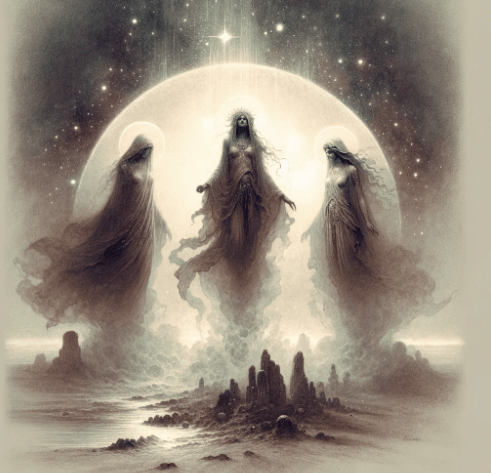
The birth of the Furies is a tale that traces back to the beginnings of Greek mythology. As Cronus, in his bid for power, mutilated his father Uranus by severing his genitals, the drops of celestial blood that fell upon the Earth gave rise to these formidable sisters.
This origin story intertwines them with the very fabric of creation, establishing them as forces of nature as much as deities. Their emergence from such an act of violence foreshadows their future roles as arbiters of justice, particularly in cases of familial and mortal betrayal.
The Furies in Myth and Literature
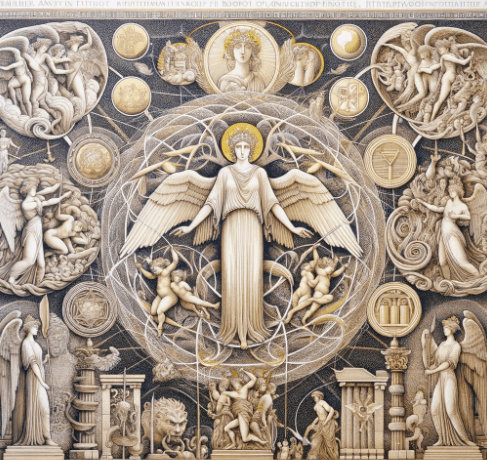
The Furies play a central role in several mythological narratives, most notably in Aeschylus’ ‘Oresteia.’ In this trilogy, they pursue Orestes for the murder of his mother, Clytemnestra, to avenge the disruption of the natural order. Their role in the narrative is complex; they are agents of vengeance and justice, but also of balance and restoration.
The Furies’ pursuit of Orestes and his eventual trial before Athena represent the societal and moral struggle between the old and new orders of justice, between personal retribution and the establishment of a judicial system.
The Furies appear in various other works of Greek literature (such as Orestes and Oedipus at Colonus), where their presence serves as a powerful symbol of the gods’ will and the consequences of defying divine law. They are often depicted in the company of other chthonic deities, emphasizing their connection to the underworld and the afterlife.
The Furies in Art and Culture
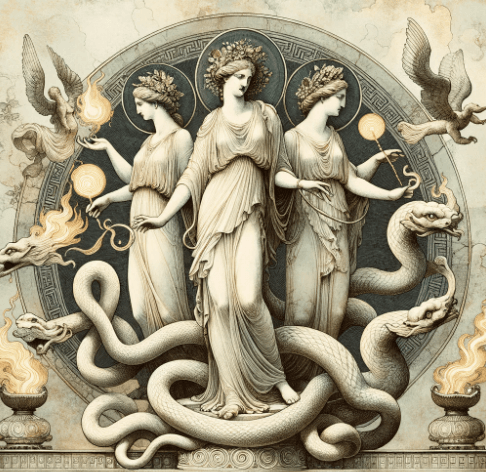
In classical art, the Furies are often depicted as fearsome, winged women, their bodies adorned with snakes, and their eyes ablaze with rage. This iconography underscores their role as relentless pursuers of justice.
In sculptures, vase paintings, and literary descriptions, they are shown wielding whips or torches, instruments of punishment that symbolize their authority and power.
The Furies’ influence extends beyond ancient Greek art and literature, permeating various aspects of culture and society. They were invoked in legal oaths and curses, reflecting their role as enforcers of moral and judicial order.
In public spaces and temples, their images served as reminders of the consequences of transgressing moral and societal norms.
The Broader Significance of the Furies
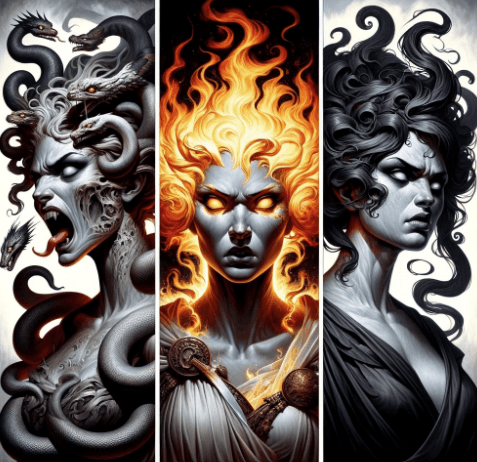
The Furies, in their relentless pursuit of justice, represent a critical aspect of ancient Greek understanding of morality and law. They embody the belief that no crime, particularly those against family and societal order, goes unpunished. Their presence in mythology and culture serves as a testament to the ancient world’s views on justice, morality, and the divine order.
In myths concerning the Furies, they encapsulate the complexities of justice and retribution. They highlight the importance of upholding societal norms and the belief in a cosmic balance that must be maintained. As agents of vengeance, they are fearsome, but as guardians of moral order, they are essential.
The Furies continue to fascinate and inspire, their legacy enduring as symbols of the bond between action and consequence, and the ever-present watchfulness of justice.
Through their tales, we can glean insights into the ancient mindset, where divine retribution was a crucial component of a moral society. A society that was governed by both human and divine laws, and where justice was deemed necessary for the preservation of order and balance in the world, no matter how harsh it may have sometimes seemed.
Get in Touch
Thank you for reading our article about Tisiphone, Megaera, and Alecto, the ethereal Furies of Greek mythology. If you found this journey into the world of divine retribution captivating, you might also enjoy learning about the Gorgons.
Should you have any questions or wish to explore more fascinating myths, feel free to reach out at richard@mythologyplanet.com, or share your thoughts in the comment section below.
For those interested in a visual exploration of the Erinyes, try this captivating YouTube video by Extra Mythology, providing an animated insight into the three Furies.
KEYWORD
Laomedon – 0 – 250
Who are the Naiads? All About the Water Nymphs of Greek Mythology – 30 – 8k
Anemoi – The Greek Wind Gods – 0 – 2k
